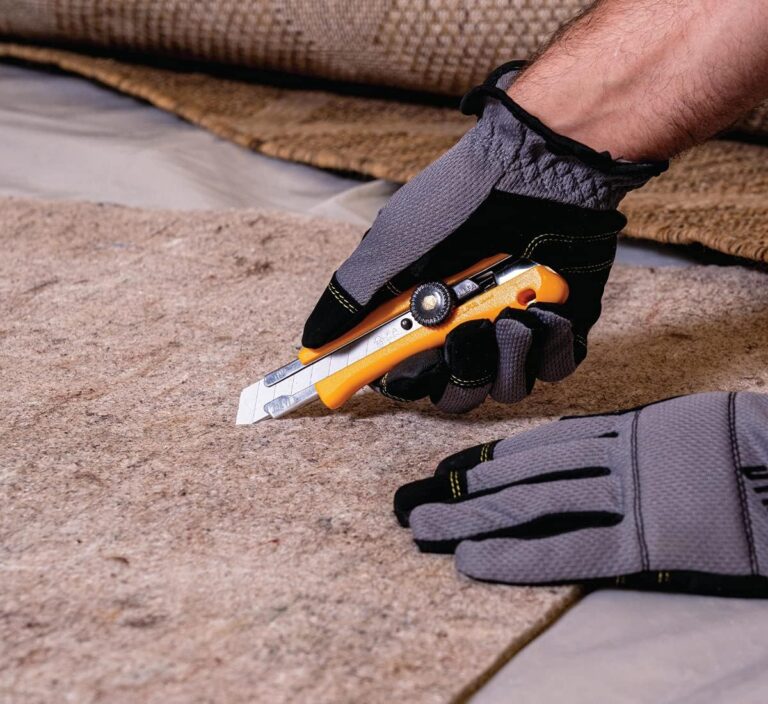Ultimate Guide to Pole Saws: Everything You Need to Know
You know the feeling if you’ve ever stood in your backyard, staring up at overgrown branches just out of reach. Those dangling limbs mock you from above while you contemplate a wobbly ladder setup that screams “emergency room visit.”
But there’s a better way!
Enter the pole saw – your new best friend for all those high-up cutting tasks.
In this comprehensive guide, we’ll cover everything you need to know about pole saws, from selecting the right one for your needs to mastering techniques that will make your neighbours wonder when you hire a professional arborist.
Disclaimer: Always follow manufacturer instructions and safety guidelines when operating any power tool. This article contains affiliate links, and we may earn a commission on qualifying purchases at no extra cost to you.
Table of Contents
- 1 What Exactly Is a Pole Saw?
- 2 Benefits of Using a Pole Saw
- 3 Types of Pole Saws: Finding Your Perfect Match
- 4 Key Features to Consider When Buying a Pole Saw
- 5 Top Pole Saw Brands and Models to Buy
- 6 Proper Pole Saw Techniques – Work Smarter, Not Harder
- 7 Maintenance and Care – Extend the Life of Your Pole Saw
- 8 Real-Life Applications: Beyond Basic Branch Cutting
- 9 What Users Are Saying
- 10 Ready to Elevate Your Yard Work?
- 11 Before You Go – Share the Knowledge!
What Exactly Is a Pole Saw?
Simply put, a pole saw is a pruning saw attached to the end of an extendable pole. Think of it as your regular chainsaw’s taller, more accessible cousin. These versatile tools let you trim branches and limbs without leaving the safety of solid ground.
Whether a homeowner maintaining your property or a professional landscaper, a quality pole saw can transform your outdoor maintenance routine.
Benefits of Using a Pole Saw
Safety First – No More Ladder Acrobatics

According to the U.S. Consumer Product Safety Commission, more than 164,000 emergency room visits annually are from ladder-related injuries. A pole saw eliminates this risk by keeping your feet planted on the ground while working.
PRO TIP: Always wear a hard hat, safety glasses, and gloves when operating a pole saw. Falling debris is the number one cause of pole saw-related injuries.
Extended Reach – The Sky’s (Almost) the Limit
Most pole saws extend between 8 to 15 feet, with some professional models reaching up to 20 feet.
Add your height to that equation, and suddenly you’re accessing branches 15-25 feet off the ground without climbing anything. That’s the equivalent of a two-story building!
Versatility That Impresses
Modern pole saws can handle branches up to 8 inches in diameter, depending on the model.
From fruit tree pruning to storm cleanup, these tools can tackle almost any overhead cutting task around your property.
Time and Energy Savings
What might take hours with a manual pruning saw and ladder can be completed in minutes with a pole saw.
Your back will thank you later!
Related post >>> The Ultimate Guide to Choosing the Best Long Leather Gloves
Types of Pole Saws: Finding Your Perfect Match
Not all pole saws are created equal. Let’s break down the main types to help you find your ideal match:
Manual Pole Saws – The Simple Solution
Best for: Occasional light pruning, budget-conscious buyers

Manual pole saws feature a simple curved pruning blade attached to an extendable pole. These are the most affordable option (typically $30-$100) and require zero fuel or power.
While they require more physical effort, they’re entirely silent, maintenance-free, and surprisingly effective for smaller branches up to 3-4 inches.
Electric Pole Saws – Consistent Power
Best for: Regular residential use, medium-sized properties with accessible outlets

Corded electric models offer consistent power without the weight of gas models. They typically range from $80-$150 and can handle branches up to 6 inches.
The obvious limitation is the cord, which restricts your range to about 100 feet from the nearest outlet (with an extension cord).
Battery-Powered Pole Saws – Portable Convenience
Best for: Mobility, medium-duty work, noise-sensitive neighborhoods
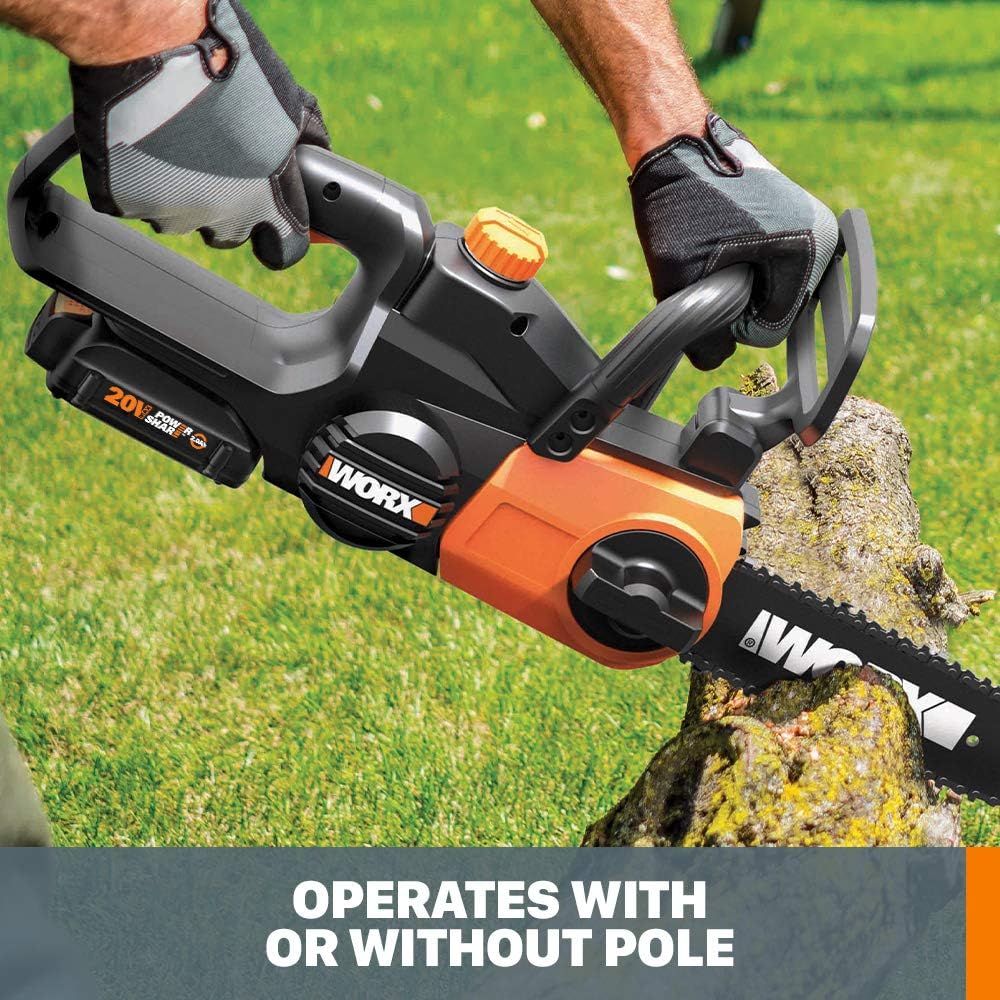
Battery technology has come a long way! Modern battery-powered pole saws offer impressive cutting power with 30-60 minutes run times per charge. They typically cost $150-$300 and provide the perfect balance of portability and power.
PRO TIP: Invest in a second battery to charge one while using the other for battery-powered models. Nothing kills productivity faster than waiting for a battery to charge!
Gas-Powered Pole Saws – Heavy-Duty Performance
Best for: Professional use, large properties, thick branches

When serious cutting power is needed, gas models reign supreme. These workhorses ($200-$500) can handle branches up to 8 inches thick and run as long as fuel is available.
The downsides? They’re heavier, louder, require more maintenance, and produce emissions. But for heavy-duty work, nothing else compares.
Key Features to Consider When Buying a Pole Saw
Extension Length – How High Can You Go?
Consider what height you’ll typically need to reach. Most homeowners find that a pole saw with a 9-12-foot extension handles 90% of residential trimming needs.
Weight and Balance – Your Arms Will Thank You
A pole saw that’s too heavy will leave you exhausted before the job is done. Look for:
- Manual: 2-5 pounds
- Electric/Battery: 7-12 pounds
- Gas: 10-20 pounds
Remember that weight distribution matters as much as total weight. Models with motors near the handle rather than at the cutting end often feel more balanced.
Power Source and Runtime
Match your power source to your specific needs:
- Small property with limited trimming: Manual or electric
- Medium property with regular maintenance: Battery-powered
- Large property with extensive needs: Gas-powered
Cutting Capacity – Size Matters
Most manufacturers list the maximum branch diameter:
- Light-duty: Up to 4 inches
- Medium-duty: Up to 6 inches
- Heavy-duty: Up to 8 inches
Safety Features Worth Having
Look for:
- Anti-rotation design to prevent dangerous kickback
- Automatic oilers for consistent blade lubrication
- Safety switches that prevent accidental starting
- Debris shields to protect from falling wood chips
Price Ranges – What to Expect
- Budget models: $30-$100 (manual, basic electric)
- Mid-range: $100-$250 (quality electric, entry-level battery)
- Premium: $250-$500+ (professional-grade gas, high-end battery)
PRO TIP: The best pole saw isn’t necessarily the most expensive one. It’s the one that matches your specific needs. For most homeowners, a mid-range battery-powered model offers the best balance of performance and convenience.
Top Pole Saw Brands and Models to Buy
For Homeowners on a Budget

Worx WG323: This 2-in-1 convertible pole saw/chainsaw offers impressive versatility for light to medium tasks. Its 10-foot reach and 20V battery system make it perfect for suburban yards.
For Serious DIYers
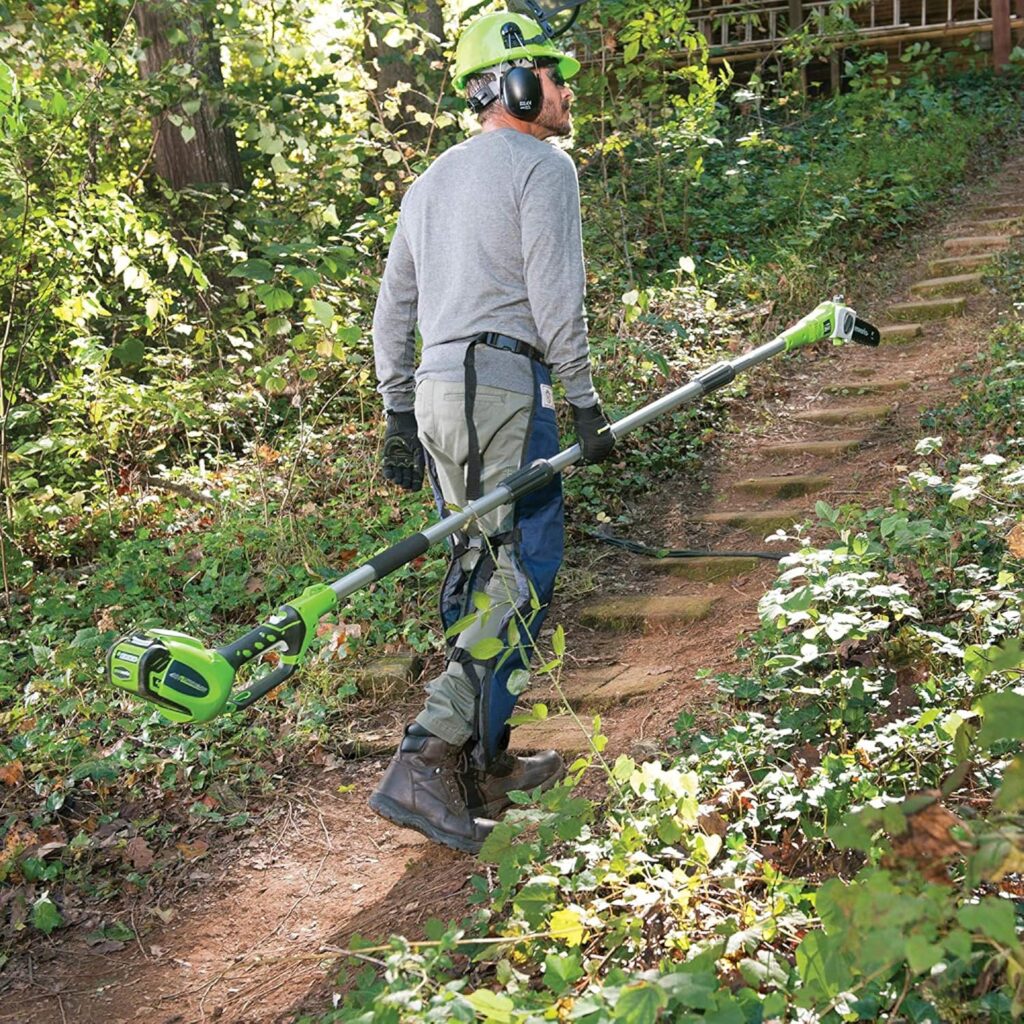
Greenworks 40v Cordless – This pole saw offers exceptional value with a 10-inch bar, 8-foot extension, and interchangeable battery system. Users consistently praise its balance of power and maneuverability.
For Professionals
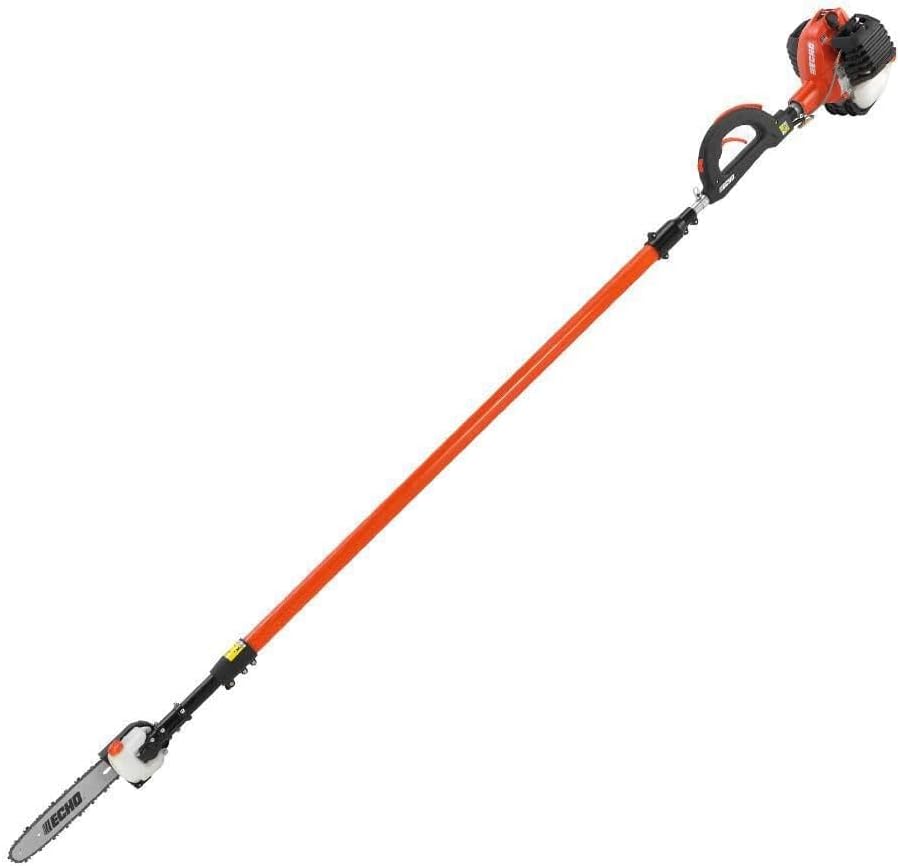
Echo PPT-2620 – Professional landscapers swear by this gas-powered model. Its commercial-grade engine and 12-foot reach make quick work of even the most challenging branches.
Proper Pole Saw Techniques – Work Smarter, Not Harder
Safety First – Before You Start
- Clear the area of obstacles and people
- Check for power lines (stay at least 50 feet away!)
- Assess the branch for size and weight distribution
- Plan your cut and escape route from falling debris
- Wear proper safety gear: hard hat, eye protection, gloves
The Perfect Stance
- Keep feet shoulder-width apart
- Maintain a balanced position
- Hold the pole saw with both hands
- Keep your body to the side of the cutting path, not directly beneath
Three-Cut Technique for Larger Branches
For branches over 3 inches in diameter, use this professional method:
- Undercut: Make a small cut on the bottom side of the branch about 1 foot from the trunk (cut about 1/3 through)
- Top Cut: Move a few inches beyond your undercut (away from the trunk) and cut from the top until the branch falls
- Final Cut: Remove the remaining stub near the branch collar (the swollen area where the branch meets the trunk)
This prevents bark tearing and promotes faster healing of the tree.
PRO TIP: Always cut with the bottom of the saw blade whenever possible (pulling toward you), not the top. This provides more control and reduces dangerous kickback.
Maintenance and Care – Extend the Life of Your Pole Saw
After Each Use
- Clean debris from the cutting head
- Wipe down the pole to prevent corrosion
- Check blade tension (if applicable)
- Store in a dry location
Monthly Maintenance
- Sharpen the blade (manual models) or chain (powered models)
- Check all fasteners and tighten if necessary
- Lubricate telescoping mechanisms
- Inspect for wear and damage
Seasonal Care
- For gas models: drain fuel or add stabilizer before winter storage
- For battery models: store batteries at 40-80% charge (never fully depleted)
- Apply light oil to blades to prevent rust during the off-season
PRO TIP: Create a maintenance calendar reminder on your phone. Just 10 minutes of maintenance per month can double the lifespan of your pole saw.
Real-Life Applications: Beyond Basic Branch Cutting
Fruit Tree Management
Proper pruning increases yield and fruit quality. A pole saw allows precise cuts to upper branches without damaging the tree by climbing on it.
Storm Damage Cleanup
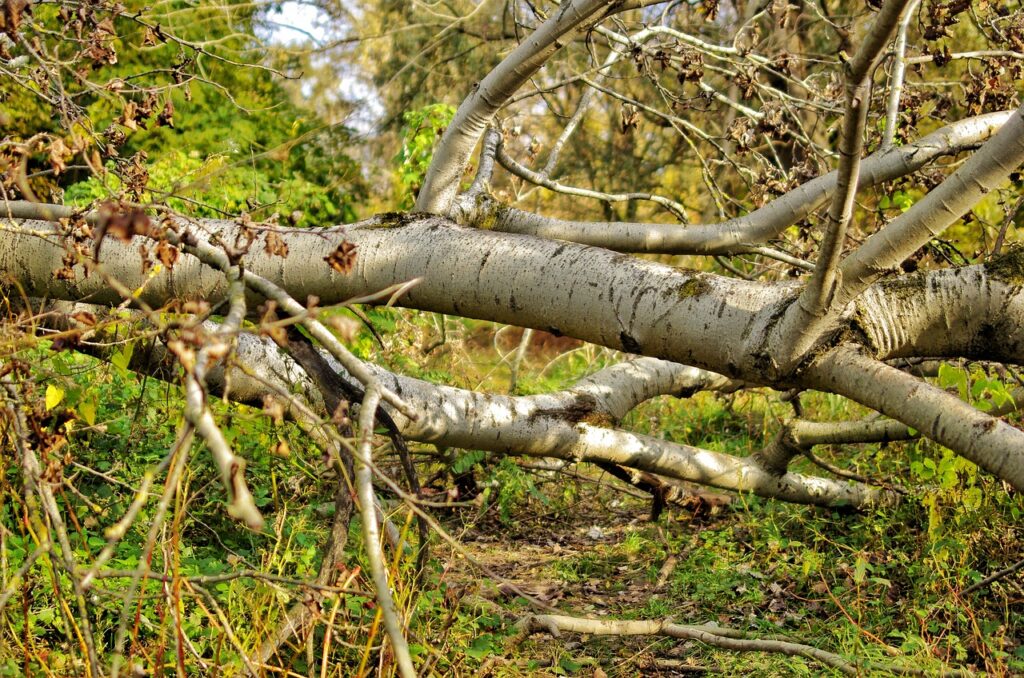
Damaged limbs can pose serious hazards after severe weather. A quality pole saw lets you safely remove hanging or partially broken branches before they fall.
Sarah from Michigan shares:
After a bad ice storm, several dangerous branches were hanging over our driveway. My Echo pole saw saved us at least $800 in emergency tree service fees!
Invasive Species Control
Certain invasive plants, like Tree of Heaven or Chinese Privet, can quickly take over your property. A pole saw makes quick work of removing seed-bearing branches before they spread.
What Users Are Saying
John from Texas:
I was skeptical about battery power, but my Greenworks pole saw has trimmed over 200 branches in our pecan orchard without a hiccup.
Landscaper Mike from California:
The gas-powered Husqvarna is a workhorse. We’ve used it daily for three years, and it only requires routine maintenance.
Ready to Elevate Your Yard Work?
A quality pole saw is an investment that pays dividends in property value, safety, and saved time.
Whether you’re maintaining fruit trees, clearing storm damage, or keeping your yard looking its best, the right pole saw makes all the difference.
[SHOP NOW: Check out our top-rated pole saws and find the perfect match for your needs!]
Related posts
- Best Electric Fabric Scissors for Seamless Cutting
- Top 7 Electrical Screwdrivers for Fast and Efficient Work in 2025
- Best Air Impact Wrenches for Power and Performance
Did you find this guide helpful?
Share this article on social media to help your friends and neighbors tackle their tree trimming challenges.
Your shares help us create more comprehensive guides like this one!



